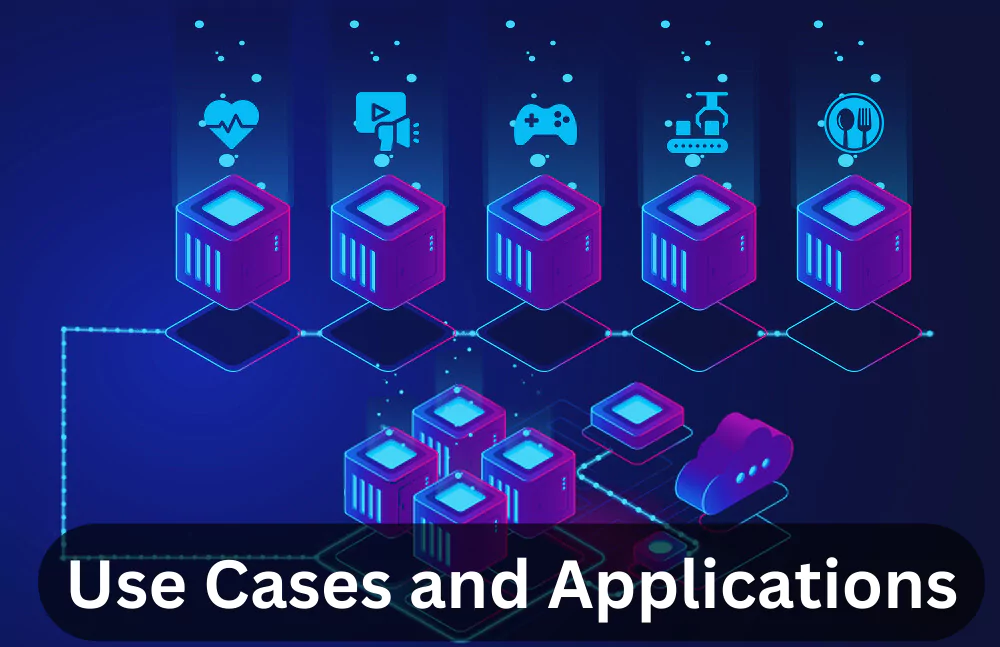Smart Contracts

The world of technology is constantly evolving, and one significant innovation that has emerged in recent years is the concept of smart contracts. With the rising popularity of blockchain technology, smart contracts have caught the attention of many organizations and businesses seeking innovative ways to enhance their operations. These self-executing contracts offer numerous benefits, including increased transparency, cost-effectiveness, and efficiency in various processes that often rely on traditional paper-based contracts.
A smart contract is essentially a piece of computer code that automates the execution of an agreement on a blockchain platform. These contracts are tailored to fit the specific terms and conditions of each transaction, ensuring that the parties involved adhere to the agreed-upon conditions. Once a smart contract is established, it cannot be altered or deleted, further instilling trust among the participants.
In the realm of business transactions and legal procedures, smart contracts show great promise as the next frontier in automating processes. By eliminating time-consuming paperwork and reducing the risk of human error, these digital contracts are poised to revolutionize various industries, from finance and supply chain management to intellectual property rights and beyond.
Fundamentals of Smart Contracts

Definition and Key Concepts
A smart contract is a self-executing contract with the terms of the agreement directly written into code. The code and the agreements contained therein exist across a decentralized network, typically on a blockchain. Smart contracts permit trusted transactions to occur directly between parties without the need for intermediaries (e.g. banks or notaries).
- Decentralization: Ensuring no single point of failure.
- Transparency: Details of the contract are visible to all participants.
- Immutable: Once deployed, it cannot be altered.
- Autonomous: Executes automatically when conditions are met.
Origins and Evolution
The concept of smart contracts traces back to the early 1990s by computer scientist and cryptographer Nick Szabo. The Bitcoin network later provided an initial platform for simple smart contracts. However, the true potential of smart contracts was unlocked with the introduction of the Ethereum blockchain in 2014 by Vitalik Buterin. Ethereum expanded upon the capabilities of Bitcoin’s scripting system, leading to the widespread adoption of smart contracts and decentralized applications (dApps).
How Smart Contracts Work
- Creation: Participants write the terms of the agreement in code (typically
Solidityfor Ethereum). - Deployment: The smart contract is deployed on the blockchain network and assigned a unique address.
- Interaction: Parties can interact with the smart contract by sending transactions to its address.
- Execution: The contract executes automatically once the predefined conditions are met.
- Termination: Upon completion, the smart contract may either end or reset for another round of execution.
| Contract Lifecycle | Description |
|---|---|
| A. | Agreement |
| B. | Digital Representation |
| C. | Deployment |
| D. | Interaction |
| E. | Execution |
| F. | Termination |
In conclusion, smart contracts are a transformative technology in the world of decentralized finance, utilizing the power of blockchain to create trustless agreements and automate transaction execution. By understanding their fundamentals, we can better appreciate the impact of these digital contracts on various industries and sectors.
Smart Contract Platforms

In the blockchain industry, several prominent platforms enable developers to build and deploy smart contracts. Here are five notable platforms that have gained significant traction:
Ethereum
Ethereum is the most well-known and widely adopted smart contract platform. Launched in 2015, it has become a pioneer in the field, attracting numerous developers and projects. Ethereum’s native programming language, Solidity, is specifically designed for writing and deploying smart contracts.
Key features of Ethereum:
- Decentralized: More than 10,000 globally distributed nodes secure the Ethereum network.
- Turing-complete: Supports complex smart contracts with its Turing-complete capability.
- Large Developer Ecosystem: Boasts a diverse range of developer tools and resources.
Cardano
Cardano is a third-generation blockchain platform focusing on high levels of security and scalability. It uses the Haskell programming language for writing its native smart contracts, called Plutus scripts.
Cardano’s unique aspects:
- Peer-reviewed research: The platform’s technology is backed by academic research and interaction with the academic community.
- Improved scalability: It implements the Ouroboros Proof-of-Stake (PoS) protocol, reducing energy consumption compared to Proof-of-Work networks.
- Multi-layered architecture: Separating the settlement layer from the computation layer enables smooth operations and upgradability.
Polkadot
Designed as a scalable, interoperable, and secure network for cross-chain communication, Polkadot enables the creation of smart contracts using its runtime environments called parachains. Polkadot’s network is secured by the Nominated Proof-of-Stake (NPoS) consensus mechanism.
Notable Polkadot attributes:
- Interoperability: Enables seamless communication between different blockchain networks, enhancing collaboration.
- Customizable runtime environments: Builders have flexibility in deploying and managing smart contracts.
- Parallel processing: Polkadot’s parachains allow multiple transactions to be processed simultaneously, improving system throughput.
Binance Smart Chain
A notable Ethereum competitor, Binance Smart Chain (BSC) is a dual-chain architecture, interoperable with the Binance Chain. BSC uses the Ethereum Virtual Machine (EVM), enabling easy migration of Ethereum projects and tooling.
Important aspects of BSC:
- Faster and cheaper transactions: BSC’s 3-second block time and lower fees make it an attractive option for developers.
- EVM compatibility: Developers can easily transfer components built on Ethereum to BSC.
- Strong backing: Supported by Binance, the world’s leading cryptocurrency exchange, BSC has a significant resource base.
Solana
Known for its high throughput and speed, Solana is a layer-1 blockchain built to accommodate large-scale applications. Capable of processing over 65,000 transactions per second (tps), the platform uses its unique Proof-of-History (PoH) timestamping system.
Key features of Solana:
- Scalability: Solana achieves a high transaction rate without sacrificing decentralization or security.
- Proprietary programming language: Developers write smart contracts in the platform’s native language, Rust.
- Unique consensus model: The PoH system, combined with Proof-of-Stake, ensures a more efficient and secure consensus mechanism.
Programming Smart Contracts

Smart contracts are self-executing agreements built on blockchain technology. They use programming languages to define the terms and conditions of a contract. In this section, we will discuss four widely-used languages for programming smart contracts: Solidity, Vyper, Rust, and Chaincode.
Solidity
Solidity is the most popular programming language for writing smart contracts on the Ethereum blockchain. Developed by the Ethereum team, it is a high-level, statically-typed language heavily influenced by C++, Python, and JavaScript. Key features include:
- Contract-oriented language
- Supports inheritance, libraries, and complex user-defined types
- Reusable code for ease of deployment
Solidity uses the Ethereum Virtual Machine (EVM) for executing code, and programs are compiled to EVM bytecode. Developers can use frameworks like Truffle and Remix to develop, test, and deploy Solidity smart contracts.
Vyper
Vyper is an alternative to Solidity, also designed for programming smart contracts on the Ethereum network. It is a statically-typed, Pythonic language with a focus on simplicity, security, and auditability. Major characteristics of Vyper include:
- Readability and explicitness
- No class inheritance or function overloading
- Limited support for generic programming
Vyper’s syntax and language features aim to minimize the risk of vulnerabilities and make it easier to understand code. This makes Vyper particularly suitable for high-security applications, such as decentralized finance (DeFi) and governance protocols.
Rust
Rust is a systems programming language, primarily used for programming smart contracts on the Solana blockchain. It is known for its speed, memory safety, and low-level capabilities. Key aspects of Rust include:
- A strong type system, with features like pattern matching and type inference
- Built-in concurrency support
- Interoperability with C libraries
Rust’s safety guarantees make it an appealing choice for developers looking to create robust and high-performance smart contracts. The Solana team has released the Solana Program Library (SPL), which provides a collection of Rust crate-based modules for building smart contracts.
Chaincode
Chaincode is the term used for smart contracts on the Hyperledger Fabric blockchain. It is written in general-purpose programming languages, with support for languages like Go, Java, and JavaScript (Node.js). Key features of Chaincode include:
- Support for various data models, such as key-value and rich queries
- Modularity and scalability
- Access control and privacy mechanisms
Chaincode provides a flexible environment for creating customized and enterprise-grade smart contracts. Its pluggable consensus mechanisms allow businesses to tailor their solutions to specific use cases.
Use Cases and Applications

Decentralized Finance (DeFi)
Decentralized Finance, or DeFi, is a system that enables open-source, permissionless financial services through the use of smart contracts. Key features of DeFi include:
- Over-collateralized loans
- Flash loans
- Liquidity pools
- Automated market makers
- Yield farming
- Token swapping
- Stablecoins
The smart contracts powering DeFi reduce the need for intermediaries and promote democratization of financial markets.
Supply Chain Management
Smart contracts are enhancing supply chain management by allowing increased transparency and accuracy of information. Some benefits realized include:
- Provenance tracking: Ensuring clear ownership and history of goods.
- Inventory control: Utilizing IoT devices for real-time updates to the supply chain.
- Automated payments and escrows: Automatically releasing funds based on predefined conditions.
By automating various processes, smart contracts lead to increased efficiency and reduced costs in supply chain management.
Digital Identity
A digital identity is created by using smart contracts and blockchain technology to securely store personal information. Examples of application areas include:
- KYC/AML: Streamlining the Know Your Customer (KYC) and Anti-Money Laundering (AML) processes.
- Identity theft protection: Creating secure, non-modifiable identities.
- Access control: Granting permission to access specific data or services.
Smart contracts enable efficient, trusted identity management and ensure compliance with changing data privacy regulations.
Voting Systems
Smart contracts can revolutionize voting systems by ensuring:
| Benefit | Description |
|---|---|
| Security | Transparency and immutability of blockchain mitigates tampering risks. |
| Anonymity | Encrypting votes prevents linking back to voter identities. |
| Auditability | Decentralized nature promotes voter confidence through accessible audit trails. |
| Reduced costs | Automating vote counting and tracking, reducing the need for manual labor. |
These use cases and applications highlight the potential of smart contracts to transform industries and streamline processes while ensuring security and transparency.
Smart Contract Security

Common Vulnerabilities
Smart contracts, as with any code, can contain vulnerabilities that hackers may exploit. Some of the most common vulnerabilities include:
- Reentrancy: A malicious contract calls back into the calling contract before the first invocation of the external call is completed, leading to repeated fund withdrawals.
- Integer Overflow and Underflow: Poorly handled arithmetic operations in smart contracts can cause integer overflows or underflows, potentially breaking the contract’s logic.
- Timestamp Dependence: Miners have a slight control over the block timestamp, which can be manipulated to exploit time-based contract conditions.
Best Practices in Security
To protect smart contracts from such vulnerabilities, best practices in security should be followed:
- Use established libraries: Utilize well-vetted, community-supported libraries to minimize the risk of introducing new vulnerabilities.
- Implement proper access control: Incorporate
onlyOwnerandonlyAuthorizedmodifiers to restrict contract operations to authorized parties. - Limiting fallback functions: Keep fallback functions simple and gas-efficient to prevent potential attacks that exploit them.
- Avoid loops: Opt for mapping instead of loops for a scalable and secure contract design.
- Specify exact Solidity version: Pin the Solidity compiler version to prevent incompatibilities and unexpected behavior.
Audit and Verification Tools
Audits and verification tools are crucial to ensure smart contract security. Here are some popular tools for audit and verification:
- MythX: A security analysis platform that detects vulnerabilities using multiple analysis techniques, such as symbolic execution, static analysis, and grey-box fuzzing.
- Slither: A powerful static analysis framework that identifies potential vulnerabilities and provides recommendations to improve contract quality.
- Securify: A security scanner that checks for compliance with a set of predefined security patterns, providing a detailed report on potential vulnerabilities.
In conclusion, smart contract security is a critical aspect of blockchain development. By understanding common vulnerabilities, following best practices, and employing audit and verification tools, developers can greatly improve the security of their smart contracts.
Legal and Regulatory Considerations

Smart Contracts and the Law
Smart contracts represent a technological advancement that automates contractual agreements. However, their legal implications remain a topic of considerable interest and debate. While traditional legal contracts are enforced and recognized by law, whether or not smart contracts have the same protections or enforcements depends on multiple factors.
One primary consideration is the jurisdiction in which the smart contract operates. Some jurisdictions, such as Malta, Gibraltar, and Singapore, have established legal frameworks to support the use of smart contracts. In contrast, other countries either lack any specific regulations or maintain a more conservative stance on the matter.
Another factor is the nature of the contract itself. As a general rule, a legally binding contract must fulfill certain requirements, such as:
- Mutual agreement between parties
- Consideration (i.e., something of value exchanged)
- Capacity of the parties (e.g., legal age, competence)
- Legality of subject matter
If a smart contract is written to meet these criteria, it can hold up in a court of law. However, the specific legal treatment of smart contracts may vary significantly from place to place.
Regulatory Landscape
The regulatory landscape for smart contracts is continually evolving. As technology advances, lawmakers and regulators are striving to keep abreast and grapple with these developments. As a result, they are creating policies and laws designed to accommodate smart contracts and related technologies within the legal framework.
What is key to note is the variability across regions. Some regions have adopted a pro-innovation stance, enacting legislation that promotes the use of smart contracts, such as:
- Malta – the Virtual Financial Assets Act
- Arizona (USA) – legislation recognizing smart contracts as binding
Conversely, other areas have either stayed silent on the matter or maintained a more cautious approach. Hence, interested parties must be knowledgeable about the regulations applicable to their specific location.
Compliance and Enforcement
For smart contracts to function within a legal and regulatory framework, it is vital to ensure that they are in compliance with the applicable laws. This may involve adhering to data protection laws, such as the General Data Protection Regulation (GDPR) in the EU, as well as fulfilling licensing and registration requirements.
Moreover, enforcement mechanisms for smart contracts are also being developed to accommodate their unique characteristics. Traditional dispute resolution methods may not be well-suited for resolving issues related to the digital nature of smart contracts, leading to the emergence of decentralized dispute resolution platforms designed specifically for these contexts.
A combination of compliance with relevant laws in the respective jurisdiction and the availability of enforcement mechanisms will ultimately determine the extent to which smart contracts can be effectively integrated into the legal system alongside existing contractual frameworks.
Challenges and Limitations

Performance and Scalability
One of the major challenges faced by smart contracts is their performance and scalability. The vast majority of smart contracts run on blockchain networks, which are inherently slower than traditional systems due to the consensus mechanisms involved. This can limit the number of transactions processed per second, ultimately affecting the user experience and effectiveness of the smart contract applications.
Furthermore, as the network grows, the amount of data that needs to be processed and stored increases, exacerbating the limitations in terms of scalability. Some solutions currently being explored to address this challenge include:
- Layer 2 solutions: These are off-chain systems that help in reducing the on-chain load and improving scalability.
- Sharding: This technique involves dividing the blockchain into smaller sections called shards, allowing for parallel processing of transactions.
Interoperability Issues
Smart contracts may face interoperability issues when it comes to interacting with other platforms or different blockchain networks. Since each blockchain has its own unique set of protocols and requirements, seamless integration and collaboration can be difficult to achieve. This can create challenges when trying to exchange data or execute cross-chain transactions, potentially limiting the use-cases for smart contracts.
Some promising solutions to tackle this issue include:
- Cross-chain bridges: These allow for the transfer of data and assets between different blockchains, facilitating seamless interoperability.
- Protocol standardization: Developing standardized protocols for data exchange and communication between different blockchains.
Upgradability and Versioning
Another challenge that arises with smart contracts is their upgradability and versioning. Once a smart contract is deployed on a blockchain, it is generally difficult to modify or upgrade it due to the decentralized and immutable nature of the technology. This becomes an issue especially when bugs or vulnerabilities are discovered in smart contracts, rendering them potentially unsafe.
To address this problem, developers need to create innovative strategies that allow for the upgradation and versioning of smart contracts without compromising the underlying benefits of the blockchain technology. Some possible approaches include:
- Upgradeable contracts: These involve employing a proxy mechanism that separates contract logic from data storage, which allows for easy upgradation of contract logic without impacting the existing data.
- Versioning: Implementing versioning systems to track changes and updates to smart contracts over time, improving governance, and enabling adaptations when needed.
By considering these challenges and exploring the various solutions, the smart contract ecosystem will continue to evolve and reach its full potential in the near future.
Future of Smart Contracts

Innovations and Upcoming Features
The world of smart contracts is rapidly evolving, with new innovations and features being developed constantly. One such development is the integration of oracles, external data sources that bring real-world information into smart contracts. This will enable the execution of contracts based on external events, such as stock prices or weather data.
Another upcoming feature is the interoperability between different blockchain platforms. This will allow smart contracts to operate seamlessly across multiple blockchains, expanding their potential use-cases. Finally, improvements in privacy and security are being made, ensuring smart contracts remain reliable and secure while maintaining user privacy.
Potential for Wider Adoption
As smart contracts become more advanced, their potential for wider adoption increases. Some areas where this technology is poised to make a significant impact include:
- Supply chain management: By automating processes and ensuring transparency, smart contracts can greatly improve efficiency and reduce opportunities for fraud in the supply chain.
- Financial services: Smart contracts can streamline processes in the financial sector, such as issuing loans, settling securities transactions, and automating insurance claims.
- Government services: Governments can use smart contracts to securely store data, facilitate voting, and even manage taxes and benefits payments.
Impact on Traditional Contract Law
Smart contracts are set to have a profound impact on traditional contract law, as they challenge many of its established practices. For instance, smart contracts can be self-executing, eliminating the need for third-party intermediaries. This can potentially lead to reduced costs and greater efficiency in the enforcement of agreements.
However, there may also be challenges in adapting to the legal implications of this new technology. For instance, the definition of what constitutes a legally binding contract may need to be updated to incorporate the use of smart contracts. Furthermore, the issue of dispute resolution may arise, as traditional court systems may not be equipped to handle disputes involving decentralized systems.
As smart contracts continue to evolve and gain mainstream adoption, a clearer understanding of their future applications and potential legal challenges will emerge. It is essential for individuals and organizations to stay informed and adapt to the changes brought about by this transformative technology.
Frequently Asked Questions
What are the common use cases for smart contracts?
Smart contracts can be used in various industries and scenarios. Some common use cases include supply chain management, insurance, real estate, voting systems, and crowdfunding platforms. In these contexts, smart contracts can automate processes, simplify transactions, and enable trustless interactions between parties.
How can smart contracts be applied in the financial industry?
In the financial industry, smart contracts can be utilized for various purposes, such as trade finance, derivatives, lending platforms, and asset tokenization. By leveraging smart contracts, financial institutions can streamline operations, reduce risks, enhance transparency, and lower transaction costs.
What are the limitations and challenges of smart contracts?
Some limitations and challenges of smart contracts include scalability, privacy, and interoperability issues. Additionally, smart contracts rely on the accuracy and reliability of external data sources or oracles, which can pose a potential vulnerability. Finally, addressing legal and regulatory compliance across different jurisdictions remains a challenge for widespread adoption.
How do smart contracts enhance security in blockchain transactions?
Smart contracts leverage the inherent security features of blockchain technology, such as decentralization, immutability, and cryptographic consensus mechanisms. By automating transactions and removing intermediaries, smart contracts can minimize the risk of human error, fraud, and tampering, ultimately enhancing the security and trust in the blockchain network.
What are the differences between various smart contract platforms?
There are several smart contract platforms available, each with distinct features, programming languages, and consensus mechanisms. Some popular platforms include Ethereum, Binance Smart Chain, Cardano, Polkadot, and Solana. The differences between these platforms may involve factors such as transaction speed, fees, scalability, security, and developer community support.
How is the legality of smart contracts addressed across different jurisdictions?
The legality of smart contracts varies across countries and jurisdictions, and it is an emerging area of legislation and regulation. Some jurisdictions recognize smart contracts as legally enforceable agreements, while others may still be developing regulations or have not yet clarified their legal status. It is crucial for businesses and individuals to consult legal counsel and remain informed of the regulatory landscape in their respective jurisdictions.






